It is required that recreational boats over 65 feet have a VHF marine radio. It is very important that all boats, even a canoe or kayak have a VHF radio when in open waters. The ability to call for help could save your life in the event of an emergency offshore. It is also a great way to communicate with other boats in the area. VHF radios today have many advanced features that make them more useful than ever.
Features of many radios include frequency scanning, weather reports, GPS integration, and the ability to send a distress signal. Some radios can even be registered with a Maritime Mobile Service Identity (MMSI) number so the USCG knows who is sending the distress signal. Keeping the radio on 16 also allows the Coast Guard to be able to contact other boats which could be beneficial in many situations. Channel 16 is also the hailing and distress frequency.
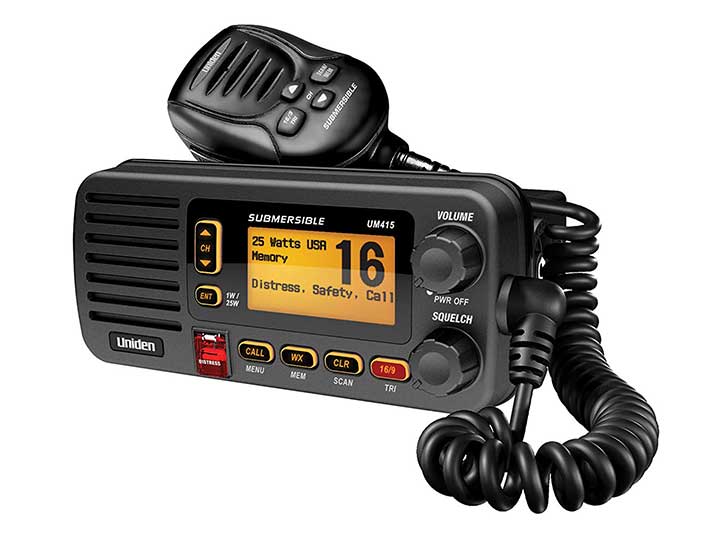
Some work is required to set up fixed mount marine radio. The radio has to be mounted and connected to power and the antenna needs to be mounted. Once the radio is set up they last for many years and are very nice to have. For small vessels or a quick solution, a handheld VHF radio is a great option. Handheld radios are also great to have as a backup safety piece of equipment in the event of an emergency.
If there is an emergency and you need to use the radio here are important details to tell the USCG. State clearly the nature of the emergency, the number of people on board the vessel, the name of the vessel, and most importantly where you are located. If the radio is properly set up pushing the distress signal can automatically send the exact location of the boat. Many people do not set this up however and need to read GPS coordinates from the fish finder, handheld GPS, or even using a cell phone. It is always good to have a plan in place with multiple ways to get help. Another great way to contact help in an emergency is with a Personal Locator Beacon or with an EPIRB.
In this guide, we will discuss the best marine radios, why you need a marine radio, how to use them, what to look for, and how they work. I’ll be going over some of the most popular handheld and fixed-mounted VHF marine radio units.
Here Are The Best VHF Marine Radios
1. Standard Horizon Explorer GPS Fixed Mount Marine Radio
| Estimated Price | $234 |
| Built-in GPS | Yes 66 channel |
| DSC Distress | Yes. |
| Waterproof | Submersible IPX8 |
| Color | Black or White |
| Man over Board | Yes |
The Standard Horizon GX1800G marine radio stand-out feather is the 66-channel built-in GPS Reciever. This allows for Digital Selective Calling (DSC) distress signals to be sent without wiring the radio into a second device that also has GPS. It also has a second receiver to receive DSC calls. This is a compact radio and is only 3.3 inches in depth. Color options include white or black. It has an IPX8 submersible rating which means it is waterproof at 1.5 meters for 30 minutes.
There is a similar Standard Horizon GX1850G that has NMEA2000 networking that most people will not use. Therefore this lower-cost unit is a better option for most people. The GX1800 without the G is the same unit without the built-in GPS Reciever and is about $40 cheaper. It is a really good idea to have a radio with a built-in display that shows the coordination all the time. Most captains know how to get the GPS position out of the primary navigation unit and might even display the coordinates on that device. However, in the event of an emergency having multiple ways to get the position immediately is important.
These units are RAM4 compatible, meaning they are capable of being connected to a RAM4 remote microphone. This means that you can have microphones at two different locations on the boat without having two radios. Often times radio calls from inside the cab are missed when outside on the deck. The second handheld microphone also has audio speakers. Navigation features of the unit include Man Overboard MOB operation and enter, save, and navigate to waypoints using the compass.
VHF Marine Radio Procedures
In the video above an officer in the Coast Guard goes over the basic VHF procedures and etiquette when using a radio. Some vessels are required to have a VHF radio but it is a good idea for all vessels to have a marine radio. Hailing other boaters is discussed using common VHF frequencies. Mayday, pan-pan, and securite calls also discussed.
2. Standard Horizon Eclipse Fixed Mount Marine Radio
| Estimated Price | $180 |
| Built-in GPS | Yes 66 channel |
| DSC Distress | Yes. |
| Waterproof | Submersible IPX8 |
| Color | Black or White |
| Man over Board | No |
The Standard Horizon Eclipse is an ultra-compact class D VHF marine radio with GPS. The waterproof rating is IPX8, which means the radio is submersible in 1.5 meters of water for 30 minutes. Other features include a backlit keypad and a microphone with noise reduction technology.
This is similar to the Standard Horizon Explorer and both are equipped with a built-in GPS receiver. The unit can send a DSC distress signal with the vessel’s MMSI number. This same radio comes in a version without a GPS and is about $45 less expensive. If that unit is properly wired into the navigation unit the GPS position can be obtained to use with a DSC distress call. This is a good quality submersible fixed mount radio and comes with a 3-year waterproof warranty.
3. Icom-m330g Fixed Mount VHF Marine Radio
| Estimated Price | $207 |
| Built-in GPS | Yes |
| DSC Distress | Yes |
| Waterproof | Yes IPX7 |
| Color | Black or White |
| Man over Board | No |
The Icom-m330g is a quality fixed mouth VHF radio. It comes with an external GPS antenna which is good when using a radio with an enclosed hardtop boat. The output power of the radio is 25 watts.
Features include a backlit display, backlit keypad, channel and volume buttons on the microphone, and weather channels with weather alerts. A unique feature is the AquaQuake which can be activated to use low-frequency sound waves to remove water in and around the speaker area.
4. Cobra MRF45D Class D Fixed Mount Marine Radio
| Estimated Price | $135 |
| Built-in GPS | No |
| DSC Distress | Yes |
| Waterproof | Yes JIS7 |
| Color | Black or White |
| Man over Board | No |
The Cobra radio is very compact when it comes to fixed-mount radios. However, it is not as rugged as other radios but would work well in an inside environment. The waterproof rating for the unit is JIS7 waterproof, which means that it is immersion resistant but not submersible. It does say submersible on the front of the unit but technically that is not correct.
The microphone is exceptional and utilizes noise-canceling technology to ensure your outgoing communications aren’t droned out by the wind or engine noise. It is DSC compatible with the standard one-touch distress button located on the front panel and it will transmit your communications in either 1W or 25W power configurations.
Furthermore, it gets the typical 10 NOAA weather channels with audible storm alerts and the standard international coverage scheme with 3 channel maps. This unit from Cobra utilizes Dual-watch technology that allows you to monitor channel 16 and another channel of your choosing simultaneously.
5. Uniden Fixed Mount Marine Radio
| Estimated Price | $140 |
| Built-in GPS | No |
| DSC Distress | Yes |
| Waterproof | Submersible IPX8 |
| Color | Black or White |
| Man over Board | No |
This Uniden 435 replaced the very popular Uniden UM415. It has an output power of 25 Watts. It does not have a GPS receiver but it can be wired to a GPS device or GPS antenna.
Available in both black or white, the UM415 is an excellent value in terms of fixed-mounted marine radios. DSC can be set up to send vessel and position information when pressing the distress button.
The water-resistant rating is JIS-8 which means the radio is submersible to a depth of 1-meter for 30 minutes. This radio is capable of both 1W and 25W transmitting configurations. It has a front-facing full class D DSC button protected by a flip cover.
This radio encompasses several great features such as Triple Watch Plus which allows the monitoring of Channel 16 and Channel 9 plus other custom-selected channels. Targeted SAME weather alert system is very convenient and accurate and includes tide reports. The Quik Command One-Touch Ch 16/9 channel selectors on the microphone make switching to emergency channels extremely fast. Additionally, the channels and scan can be selected from the microphone.
The LCD display has a dimmer and adjustable LCD contrast settings. The dimmer is helpful when boating in low-light and night conditions. With some radios, I actually have to place objects over the radio to keep my night vision when driving boats at night.
There is a UM385 compact version of this radio that is not submersible and only has a JIS4 splash-resistant rating. This will work if the radio is mounted inside a cabin but should not be used outside.
6. Garmin VHF Marine Radio
| Estimated Price | $300 |
| Built-in GPS | No |
| DSC Distress | Yes. |
| Waterproof | Yes IPX7 |
| Color | Black |
| Man over Board | No |
The Garmin 110 in a basic VHF radio. There is not a built-in GPS but it can be easily connected to a GPS device or GPS antenna using an NMEA 2000 network cable. It comes with knobs, mounting hardware, a protective cover, a flush mount gasket, and power cables.
There is also a Garmin 210 which has AIS built-in. The AIS information for nearby vessels that have AIS transmitters can be displayed on the chart plotter. AIS can be very useful for people who boat near commercial vessels. If this is not a needed function the Garmin 110 is the better option because it is a lower-cost unit.
7. Lowrance Link-6 DSC Marine VHF Radio
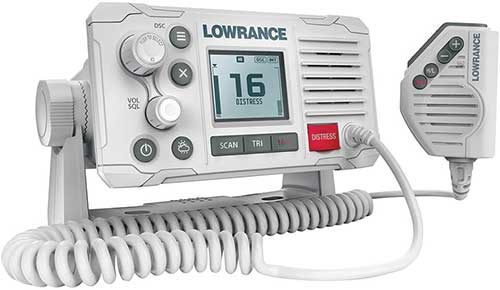
| Estimated Price | $240 |
| Built-in GPS | No |
| DSC Distress | Yes |
| Waterproof | Yes IPX7 |
| Color | Black or White |
| Man over Board | No |
Lowrance makes two VHF fixed mount Marine Radios the Link-6 and Link-9. The Link-6 does not have a built-in GPS but can be wired to the navigation unit to offer DSC functionality. Key features of the Link-6 include a four-button hand microphone, 16 dedicated channels, multiple scan modes, and flush or bracket mount installation. In the contacts list up to 50 names with MMSI numbers can be stored.
The Lowrance Link-9 comes with a built-in GPS receiver. It can also receive GPS position data from an SMA connector, NMEA-500 for Chartplotter GPS, and NMEA 2000 for the network antenna connection. The build-in AIS receiver information can be displayed on the radio’s screen or overlayed on a multifunction display’s navigation or radar screen. The Link-9 also has a MOB function to navigate back to a person or object in the water.
8. Standard Horizon HX890 Submersible Marine Radio
| Estimated Price | $200 |
| Built-in GPS | Yes 66 channel |
| DSC Distress | Yes |
| Waterproof | Submersible IPX8 |
| Man over Board | Yes |
| Weight | 10.94 oz |
| Battery Life | Up to 11 Hours |
| Floating | Yes |
The Standard Horizon HX890 is a class D handheld radio that supersedes the old version, the HX851. This radio floats, making it an excellent choice for kayakers and boaters. The waterproof rating is IPX8, which means the radio is submersible in water depths up to 1.5 meters.
This handheld allows you to choose to transmit power levels at 1W, 2W, or 6W, which is incredibly useful for both short to mid-range communications. The rechargeable 1800mAH Li-Ion battery lasts about 10-hours with average use. Many reports agree that it is one of the longest-lasting handheld marine radios on the market. Also included is a 12-Volt DC 3 hour quick charger.
This radio has an automatic water detection module that will, upon being in contact with water, flip on its emergency strobe light function. Having a strobe is very important for day and night rescue situations.
The HX890 is equipped with DSC and features a powerful WAAS GPS receiver with 66 channels. This is all interfaced through the oversized full dot-matrix LCD screen that measures roughly 2.3 inches diagonally. These screens are used for their incredible detail but extremely low cost to battery life.
Some VHF radios have a blue or orange background, which many people seem to enjoy, however, these monochrome screens tend to save a lot of battery so I think it is a fair tradeoff. Although the screen lacks color, the keypad does utilize a faint red illumination to ensure accurate and easy usage in the dark.
How to Select a Handheld VHF Marine Radio
9. Standard Horizon HX40 Handheld VHF Marine Radio
| Estimated Price | $126 |
| Built-in GPS | No |
| DSC Distress | No |
| Waterproof | Submersible IPX8 |
| Man over Board | No |
| Weight | 8.1 oz |
| Battery Life | Up to 10 Hours |
| Floating | No |
The Standard Horizon HX40 is a compact floating handheld VHF marine radio. It is 2.5 x 3.74 x 1.3 inches which is about the size of a deck of cards. It does not float unless placed into a floating case that is sold separately.
10. Standard Horizon HX300 Submersible Floating Marine Radio
| Estimated Price | $120 |
| Built-in GPS | No |
| DSC Distress | No |
| Waterproof | Submersible IPX8 |
| Man over Board | No |
| Weight | 8.4 oz |
| Battery Life | Up to 11 Hours |
| Floating | Yes |
This radio is the smallest floating marine radio on the market. It is small enough to fit in your pocket. Included is a USB charger and cord. The radio can plug into any USB port to charge and receive a full charge in roughly 3 hours. We have talked about a similar model to this, the HX890 floating marine radio which probably has a better overall performance but the size of this radio makes it a great option.
Its transmitting power is capped at 5W, which may seem like a slight disadvantage to the many 6W models on the market. However, the distance a handheld radio will transit is mostly limited by antenna height, not transmission power. It is equipped with a 1650mAH 3.7V Lithium-ion battery that gets about 10 hours of usage.
This unit’s waterproof rating is IPX8, which means the radio is submersible in water depths up to 1.5 meters for 30 minutes. The radio is equipped with NOAA weather channels, and customizable weather alerts, and utilizes all of the traditional US and Canadian channels.
The screen is a very tiny monochrome LCD with orange key illumination built-in. Just like the HX870, this radio does have a water-activated strobe beacon.
I recommend this to anyone on a budget or looking for something extremely small. If you’re venturing out in a large vessel, you should look to a mounted VHF radio or something with more features, like the HX890. If you are taking out a kayak or something similar, this unit will save space but realize that it does not have a built-in GPS to send position information.
11. Icom M94D VHF Marine Handheld Radio
| Estimated Price | $350 |
| Built-in GPS | Yes |
| DSC Distress | Yes |
| Waterproof | Yes IPX7 |
| Man over Board | Yes |
| Weight | 10.58 oz |
| Battery Life | Up to 10 Hours |
| Floating | Yes |
The Icom M94D is a top-of-the-line VHF handheld marine radio. This unit has GPS and other systems to create an integrated Global Navigation Satellite System. The position information can be used to make DSC distress calls and to navigate to waypoints. Key features include float’n flash, AquaQuake, and an active noise-canceling microphone. It has an output transmission power of 6 watts. Float’n flash is nice because if the radio falls into the water it will automatically start flashing even if the radio is off.
This radio comes with a 570mAh rechargeable Li-ion battery, AC adapter, battery charger, belt clip, and hand strap. The unit can store up to 50 waypoints. It has a dot-matrix display that can be read even under direct sunlight. I like this unit cause it serves as a good VHF radio and navigation device. It would also be a good radio to keep on the boat as a backup radio and backup navigation device.
12. Icom IC-M73 Handheld Marine Radio
| Estimated Price | $220 |
| Built-in GPS | No |
| DSC Distress | No |
| Waterproof | Submersible IPX8 |
| Man over Board | No |
| Weight | 9.0 oz |
| Battery Life | Up to 16 Hours |
| Floating | No |
This radio does not float. However, it is submersible and can be submerged in 1.5m (4.9ft) of water for 30 minutes. Battery life is rated at 18 hours under normal operating conditions. This is longer than most handheld radios! It might not float but it does have a large-capacity lithium-ion battery.
The IC-M73 can be operated at 6W of transmitting power, which is higher than the traditional 5W maximum. That one extra watt doesn’t really seem to help in range, despite the description of the product claiming so, but it does help your audio traffic punch through busy channels and white noise.
This is also the loudest handheld radio. Icom achieves this incredible volume level by using a BTL (bridge-tied load) amplifier, which they claim doubles the audio. Something else that is really nice about this particular radio is the dual/tri-watch function that allows you to monitor several channels, such as channel 16 simultaneously with other channels.
13. Icom M25 Handheld VHF Marine Radio
| Estimated Price | $160 |
| Built-in GPS | No |
| DSC Distress | No |
| Waterproof | Yes IPX7 |
| Man over Board | No |
| Weight | 7.8 oz |
| Battery Life | Up to 11 Hours |
| Floating | Yes |
The Icom M25 is the lightest floating marine radio on the market. It also has an option HF-231 handheld speaker microphone to make it easy to talk while wearing the radio on a belt. The 1500 mAh lithium-ion battery can be charged through a standard USB connection. It displays the battery life with a 4-step indicator. Color options for the stripes are marine blue, pearl white, and metallic gray.
Key features of the radio are weather channels, weather alert, auto scan, LCD backlight, and AquaQuate the removed water from the speaker when activated. Float’n Flash is activated if the radio is dropped into the water even if the radio is turned off. This turns on the backlight on the radio display and lights a LED that blinks on the rear panel.
14. Uniden MHS75 2-Way Submersible VHF Marine Radio
| Estimated Price | $90 |
| Built-in GPS | No |
| DSC Distress | No |
| Waterproof | Submersible JIS8 |
| Man over Board | No |
| Weight | 10.2 oz |
| Battery Life | Up to 12 Hours |
| Floating | No |
This radio comes with a JIS8 waterproof rating, which means the radio is submersible for up to 30 minutes at five feet. The unit comes with a belt clip, wrist strap, DC charger, and lithium-ion battery. This radio offers great overall value but does not float.
The maximum transmitting power level is 5W, which as we discussed before is not a big deal. This low-power option of this unit is 2.5W. Using lower power is a good idea when communicating over short distances. It saves battery life and interferes less with other people that might be using the channel in the area.
This radio has the tri-watch feature, which means it will monitor multiple channels including Channel 16 and Channel 9 with another channel of your choosing. This radio is usable on all of the standard American and Canadien channels.
The LCD screen on this unit seems to be a respectable size among VHF radios and is one of the easiest to read in direct sunlight. Just like some of the more expensive radio’s on this list, the MHS75 allows for the standard 10 NOAA weather channels and NOAA weather alerts with very loud audible alarms when the weather changes for the worst.
Battery life is good, coming in at roughly 12 hours on a single charge. The unit comes with a DC cigarette lighter charger and the radio will audibly alert you when the batteries are dangerously low.
This radio offers all the standard features and packs them into a very rugged and compact aluminum shell. The Uniden MHS75 is a great overall handheld marine radio if the radio does not need to float.
15. Uniden Atlantis 155 Floating Marine Radio
| Estimated Price | $70 |
| Built-in GPS | No |
| DSC Distress | No |
| Waterproof | Submersible JIS8 |
| Man over Board | No |
| Weight | 8.53 oz |
| Battery Life | Up to 10 Hours. |
| Floating | Yes |
The Atlantis 155 floats and is submersible with the highest IPX8 / JIS8 rating. The speaker also clears itself of water after being submerged. This radio is powered with 4 rechargeable AAA batteries. Also included is a DC charging cable. This is definitely the best value marine handheld radio that floats and has the highest submersion rating. Also, the ability to use standard AAA makes it a great option for an emergency backup marine radio.
The transmit power is user-selectable to 3W or 1W of power. That is the only drawback to this unit, most handheld marine radios have a standard 5 watts of transmission power. The battery life lasts about ten hours. The unit comes with a 3-year waterproof warranty.
16. Cobra MRHH350FLT Floating VHF Marine Radio
| Estimated Price | $120 |
| Built-in GPS | No |
| DSC Distress | No |
| Waterproof | Yes IPX7 |
| Man over Board | No |
| Weight | 8 oz |
| Battery Life | Up to 8-14 Hours |
| Floating | Yes |
The waterproofing rating is JIS7 / IPX7 which allows safe submersion at 3 feet for up to 30 minutes. Not quite as good as units with an IPX8 rating but still very waterproof.
The power transmission levels available are 1, 3, and 6W which is on par with some of the best handheld devices on the market today and will safely cover at least 3 miles with ease. It comes equipped with a tri-watch, which essentially means it will scan three different channels simultaneously.
You will get the typical 10 NOAA weather channels in addition to all of the standard US and Canadian channels. If there is a severe weather alert, this device will play a loud tone alerting you to possible dangerous changes in the weather.
This radio utilizes a noise-canceling microphone and water purging speaker to ensure excellent audio quality, even when floating in the water.
17. Cobra Electronics MR HH150 Floating Marine Radio
| Estimated Price | $80 |
| Built-in GPS | No |
| DSC Distress | No |
| Waterproof | Yes JIS7 |
| Man over Board | No |
| Weight | 8.0 oz |
| Battery Life | N/A |
| Floating | Yes |
This Radio uses rechargeable AAA batteries which are included. Standard AAA batteries also work with this radio so if the radio is dead in an emergency it can be repowered quickly. The HH150 has a waterproof rating of rated JIS7 which is submerged in up to 3 feet of water for 30 minutes. This unit weighs 8 ounces and does float!
Also included with this radio is a belt clip, wrist strap, and 12-volt power cord. The radio has a max transmission power or 3 Watts but can be sent at low, medium, and high output power for short and medium-range communications. As with most marine radios, weather alerts are given with tones and visual alerts. NOAA weather can be access on 10 NOAA weather channels.
Other Ways To Communicate or Contact Help
In the event of an emergency, another good way to contact help is with a Personal Locator Beacon or with an EPIRB. These devices are typically used to send distress signals only. However, in the PLB article, I detail satellite communication devices as well. It is a good idea to have one of these devices on the bait in addition to a VHF marine radio.
Why Every Boat Should Have a Marine Radio
Marine radios give us the ability to communicate with the Coast Guard and also other vessels if needed. Even in non-emergency situations the Coast Guard or other boats may contact try and contact you. This can be for a large variety of reasons. Sometimes they need help, sometimes they want to give vessels in the area information. Sometimes you are making a wake in the harbor and they want to remind you to slow down.
The most important reason for having a radio is to call for help and be able to help others that call for help. It is not always a life-threatening emergency but other boats in the area can often offer assistance. If you spend lots fo time on the water you realize these situations happen quite often. Offshore cell phones do not get reception and VHF radios become a primary means of communication.
Using a marine radio is also handy in communicating with harbors, docks, locks, bridges, marinas, etc. If you’re sailing international waters, you’ll need a radio to communicate with the local coast guard and law enforcement.
Also, most marine radios are fully capable of receiving weather broadcast reports when/if they are in the range of on entity broadcasting such information. These reports can also provide vital warnings such as natural disasters or conflicts.
Marine Radios Explained
There are two types of marine radios available on the market, handheld and fixed mount. Both have the same function but the performance does change. The main advantage of the fixed mount radio is the range of signal and being the ability to use the boat’s power supply.
Handheld: Pretty self-explanatory, these are radios that look a lot like a walkie-talkie and are meant to be held in your hand, clipped on your belt, or kept in your bag in case of emergency. Having portability and a small form factor does come at a cost, though. These usually have less range and fewer options than a fixed radio but are especially useful if you plan to use multiple different watercraft.
Fixed Mount: These are radios that you would install permanently somewhere easily accessible in your watercraft. These usually come with a detachable corded radio and the radio unit itself sits on a swivel. Fixed radios typically have the option to be used with an extended antenna, giving you further broadcasting range.
A marine radio is classified as a Very High Frequency (VHF) radio. Essentially this means it has access to an all-inclusive radio frequency band between 156MHZ and 174MHz. This range of frequencies is regarded as the maritime mobile band. The same rules apply anywhere you are in the world.
How to Utilize Marine Radio Technology
VHF radios operate on an international standard and have very distinct rules and regulations as to how they are used in communication. Channel 16 (156.8 MHz) is the international distress and communications channel.
Channel 16 can be used in a wide variety of applications. This includes establishing a baseline of communication that then moves to a more private channel. For the most part, channel 16 is used for urgent communication in which one or more parties are in distress. Assistance can be then be provided by the Coast Guard and/or nearby vessels.
International regulations require all vessels to achieve a constant state of “radio watchkeeping”. This essentially means they are open to communication and monitor channel 16 at all times while sailing. It is standard to move communication off of channel 16 as soon as possible. Most likely within the initial point of communication. This leaves the channel clear for other users who may also be in distress.
Sending a Distress Signal with a VHF Marine Radio
When an emergency arises that is life-threatening, you have two options in order to ask for help from other vessels and the Coast Guard. First, if you have a DSC-enabled radio on hand, activating the automatic distress transmission system would be the first thing you can do.
If you receive no response or do not have a DSC-enabled device, using Channel 16 to broadcast your distress is your best option. The proper procedure for broadcasting such an event on Channel 16 is as follows: Call out “Mayday” three times followed by your ship’s name, your coordinates, and the issue at hand.
A distress signal would sound like this: “Mayday Mayday Mayday, Seastar. Position 20°35′ North and 77°51′ West. Our vessel is sinking”. This entire message can be repeated three times. If someone is severely injured, including brief information about the injury may help rescuers be prepared for treatment once they arrive. Furthermore, including information about how many people are on board may also be imperative to rescue efforts, especially if people are overboard or the vessel is sinking as it will allow the responding crews to continue searching for people until they find everyone.
When a distress signal is sent via DSC, the device will include the ship’s MMSI number and attempt to include coordinates and other GPS information if possible. You have to connect your GPS and DSC devices and set them up accordingly for your DSC instruction manual to automatically broadcast this information. Distress signals can be sent in both single-frequency and multi-frequency configurations.
Distress Signals
A single-frequency distress signal is issued across a single band. The system will then await a response for a maximum of four minutes before issuing another distress signal. This will be repeated five times until switching to a multi-frequency configuration.
A multi-frequency distress signal is sent on all medium and high frequencies in an attempt to receive any and all responses. You will be unable to receive transmission while attempting a multi-frequency distress signal. This it because it uses your return antenna for each transmission.
Distress signals can come in both a specific designation and a general or non-designated transmission. A designated distress signal will send out information pertaining to one of ten pre-defined groupings with the aim of identifying the source of distress.
Designated distress signals are as follows: Man overboard, violent incursion and/or piracy, vessel disabled, punctured or sinking, listing, fire or explosion, flooding, collision, grounding, and abandoning ship.
A vessel that receives a distress signal that is outside the range of a coast station is required to relay the distress alert to the utmost level of their capabilities. When a coast station receives a DSC distress alert, the station will immediately send an acknowledgment. The sending unit will both cease repeating and tune in on the designated channel for the distress message to be sent.
Digital Selective Calling
Seagoing vessels that utilize a permanently mounted radio are now required by international regulation to be equipped with Digital Selective Calling (DSC). DSC can be utilized across medium or high-frequency channels and is a core integration of the Global Maritime Distress Safety Program (GMDSS). All fixed-mount VHS radios manufactured since 1999 come with DSC.
DSC is essentially an automatic distress signal that attempts to alert anyone and everyone possible with information regarding your problem.
By using a narrower but more powerful band, DSC eliminates receiver squelch and has a 25 percent increase in speed and range over traditional analog signals. DSC requests contain the ship’s Maritime Mobile Service Identity (MMSI) and may also contain a ship’s GPS location.
DSC greatly enhances the safety features of a marine radio by allowing a single push button distress signal to be sent out immediately. The signal contains vital information for emergency response units to track, locate, and communicate with the vessel in need.
Many ships equipped with DSC use a separate VHF radio and MF/HF DSC controllers that allow a dedicated reviewer to monitor Channel 70. This way, your primary receiver is always in use for regular communications while your DSC dedicated receiver is always monitoring and ready to call for help.
Marine Mobile Service Identity Number
The Maritime Mobile Service Identity (MMSI) number is a 9-digit number unique to your vessel that is assigned to your radio DSC system. Information about you and your vessel is added to a profile that the Coast Guard can easily access in case of an emergency. This greatly increases the effectiveness of help during distress.
You can register for your personal MMSI here. It’ll cost about $25.
Setting Squelch
A telecommunications squelch is essentially a noise gate that regulates and suppresses what your radio will and will not pick up. This ensures the radio remains silent and usable when not receiving an actual transmission, effectively reducing channel noise.
An open channel without suppression will create a white noise type transmission that is constant and unnecessary, not to mention annoying and distracting.
To properly set squelch, turn the SQL knob until you faintly hear a white noise sound, then back it off ever so slightly. Setting your squelch too low may result in the lower performance of the receiver. This means transmissions from far away may not be picked up on your radio.
False Mayday Calls
Yes, using a marine radio to call out a false distress signal is illegal and punishable by up to six years imprisonment. Possible fines are up to $5000 in civil court and $250,000 in criminal court. Simply put, do not call for help unless your distress is legitimate.
On top of all of that, you may be required to reimburse the Coast Guard for the time and assets used to respond to your false call.
VHF Maine Radio Etiquette
Using a VHF radio comes with a certain level of responsibility and communicative skill set. Keeping messages short but informational is actually much more difficult than most people realize. Oversharing details on vital channels not only bugs other nearby vessels but could impede their ability to communicate and even issue a distress signal.
The proper way to address a vessel is by beginning the transmission on channel 16 (when there is no other radio chatter) with the name of the boat you wish to communicate with followed by your boat name like this: “Seastar Seastar. Galileo. Over”.
To respond: “Galileo, this is Seastar”. Proper radio etiquette mandates that you only retry your acknowledgment after a full two minutes have passed with no response. Furthermore, you are permitted a maximum of three attempts to get the vessel’s attention with the 2-minute intervals. After that, you should wait a minimum of 15 minutes before making another attempt.
Once the vessel responds, a channel designation should be given in an attempt to move from channel 16 to a non-commercial ship-to-ship communication channel. These are channels 68, 69, 71, 72, and 78A. It may be tempting to call these out as “Sixty-eight”. However, it is actually proper to communicate them as each number individually, like “six-eight” to avoid confusion.
Once you have tuned in to the communication channel, you would once again acknowledge the other vessel to ensure you’re both on the correct channel and then commence with your conversation.
VHF Radio Conversations
Remember, anyone with a VHF radio within range can follow your communication and listen in on your conversation. Keep it clean and respectful and be mindful of the details you share.
Always ending your conversation in “out” allows anyone else awaiting the use of that channel the opportunity to essentially claim it for their communication purposes.
If leaving channel 16 lands you on a communication channel already occupied by other vessels communicating. The options are to wait for the “out” signal of the vessels occupying that channel. Resorting back to channel 16 and designating another communication channel is the second option.
Never attempt to communicate other than to “call” another vessel or send a distress signal on channel 16. Channel 9 is an alternative channel to channel 16 designated for calling.
Technically, profanity over the air is illegal so watch your language. If you can’t say it in a high school classroom, you can’t say it on a VHF radio. Even if you think you and the vessel you are communicating with think you are on a channel alone.
VHF Marine radio Transmission Power and Antennas
Transmission power dictates how far you can send and receive radio transmissions. This is measured in wattage and is usually a variable setting located on the front of your radio. Most fixed-mount VHF radios are capable of operating from 1 to 25 watts and handheld units are generally capable of up to 5 watts. The FCC will not allow power over 25 watts.
Choosing a power level is basically related to how far your transmissions need to travel. If you’re communicating with a vessel that is nearby, perhaps only 1 watt is necessary. This ensures that your communications are not broadcasted far out into the sea where other vessels will unnecessarily hear them. If you’re making a distress call, you’d likely want to use the maximum power output of your device to reach as many vessels as possible.
Keep in mind that the quality and height of the antenna will be the number one attribute of an effective range. The further your antenna can “see”, the more range your radio will have regardless of the wattage it is set to.
Higher power levels may help your radio transmission navigate radio noise and impede traffic.
For a typical adult standing on the deck of the boat, the viewable distance to the horizon is roughly three miles. Since VHF radios work based on a line of sight and fail to transmit to receivers without a line of sight. Three miles will likely be your limit unless you have a tall antenna perched up high aboard your vessel. The higher the antenna, the further out it is capable of reaching.
VHF Marine Radios Antenna Size
For antennas a general rule of thumb is the taller the antenna, the more coverage you will have. The advantage of a fixed mount VHF radio is a tall antenna. Held radios work well but can not match the range of a fixed mount radio with a good antenna.
VHF radios can only emit a 25-watt signal. However, large antennas that can be vertically mounted can have a large gain on the received signal. This makes it so signals can be picked up clearly at greater distances. High gain antennas must stay verticle though. Since this is often not the case on boats that sway in the waves a medium gain or low gain antenna is a good option. Hald-held radios are low gain so the direction of the antenna is less important.
Some people like to mount their antennas at an angle. This is called a “canted mount” or “raked mount”. This is also called a silly waste of a potential performance. Why? Because of the higher your antenna, the better its performance, period.
The higher in elevation the end of the antenna that sticks up into the air and allows for more oversight into the distance, the better your range will be. A canted antenna will only have the performance of how tall it is from the surface of the water. This is independent of how long the actual antenna is. Straight up and down is the best way to mount an antenna. If you really want to squeeze every ounce of range out of it, you’ll mount it on the highest point of your boat.
Check out this website for Coast Guard VHF coverage maps.
Frequently Asked Questions
Do I need a VHF radio for my boat?
Recreational vessels under 20 meters in length are not required to have VHF marine radio in many areas. That being said almost all boats that travel offshore have a VHF marine radio. This is an important communication tool to talk with other boaters in the area. This allows fishermen to say how their day is going. It is also commonly used to give wind, wave, and weather reports in nearby areas. Even vessels as small as a kayak should have handheld marine radio with them when on the ocean.
Captain Cody has worked on charter fishing boats in the Florida Keys, Virgin Islands, and Alaska. Growing up in Pennsylvania Cody has also done extensive freshwater fishing including bass fishing tournaments. Cody strives to provide detailed information about the best fishing gear and tactics to help both novice and experienced anglers have a more productive and enjoyable time on the water. Cody also has a background in aerospace engineering and neuroscience but really only takes pride in being good at one thing and that is fishing!

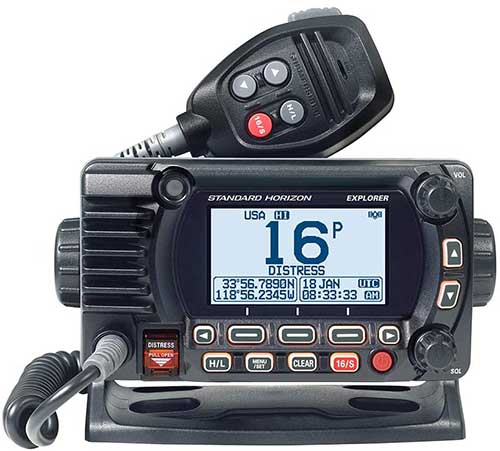
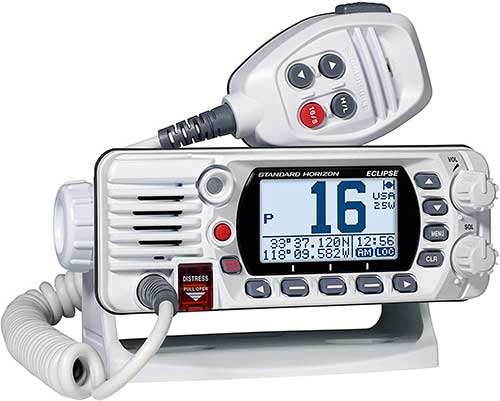
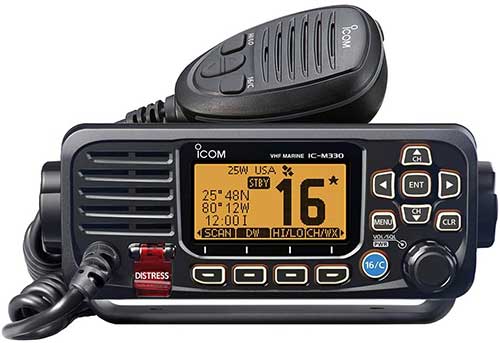
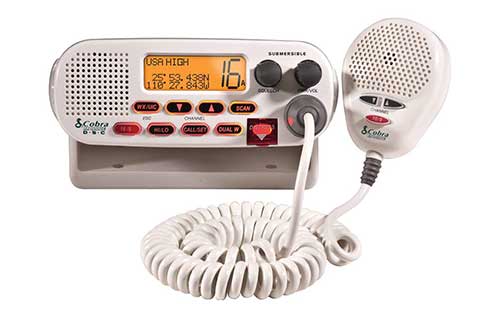
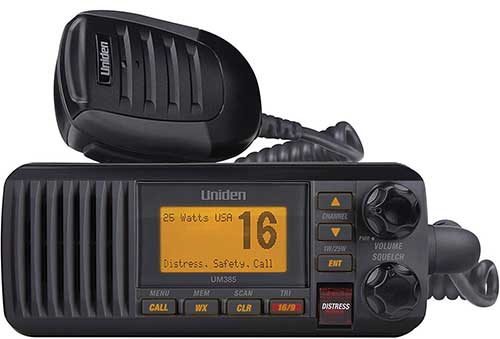
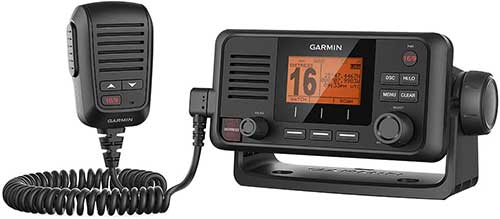
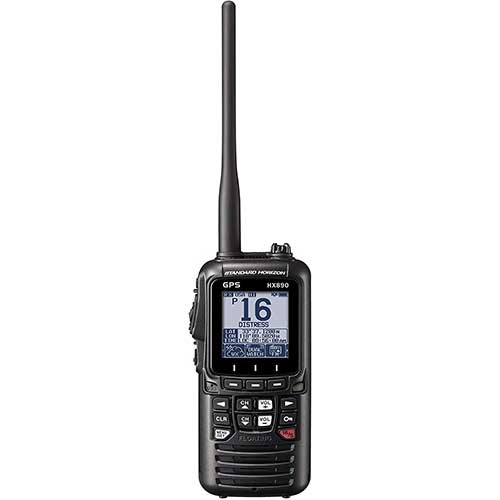
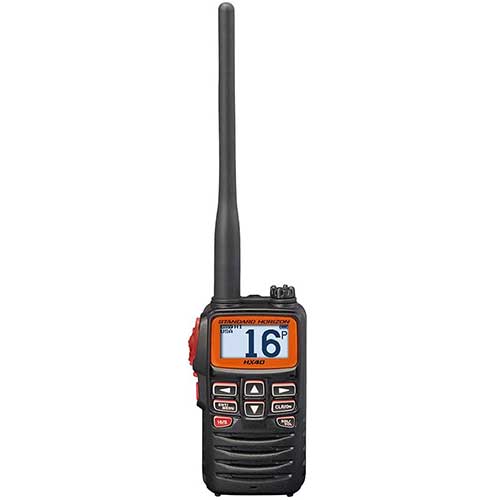
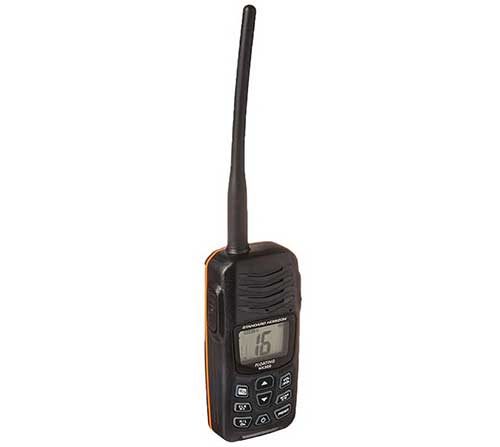
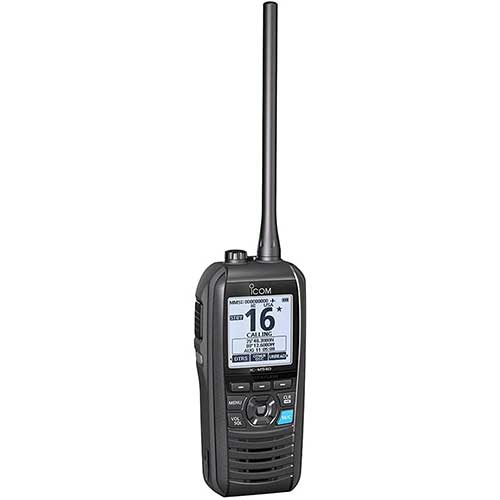
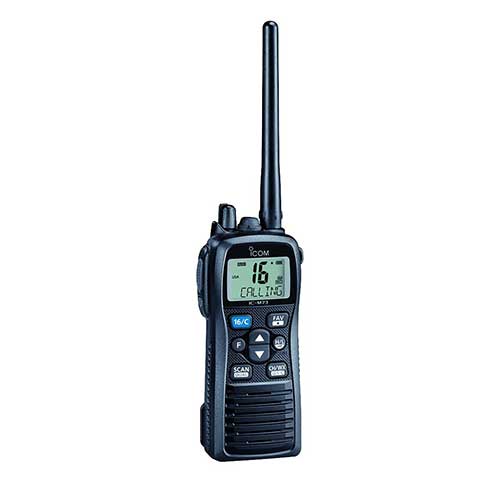
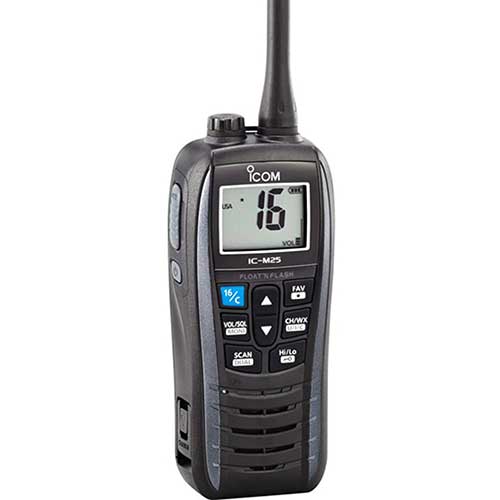
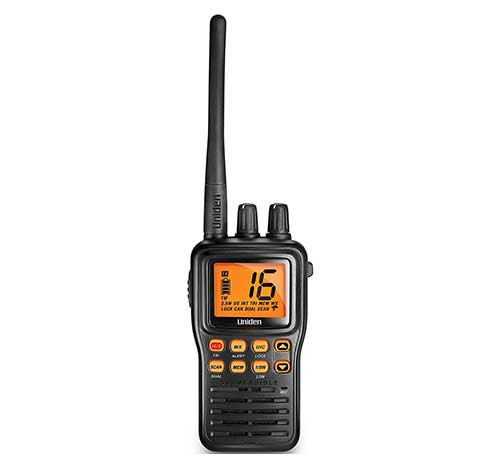
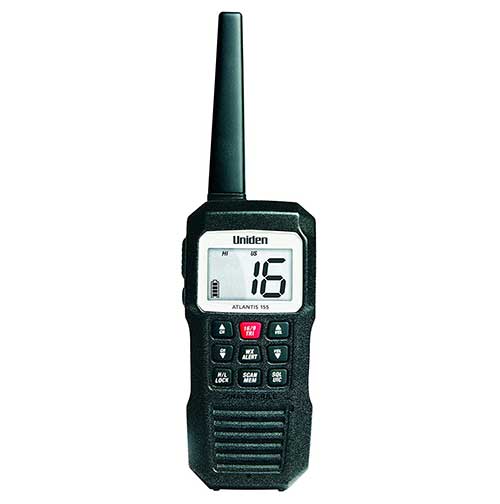
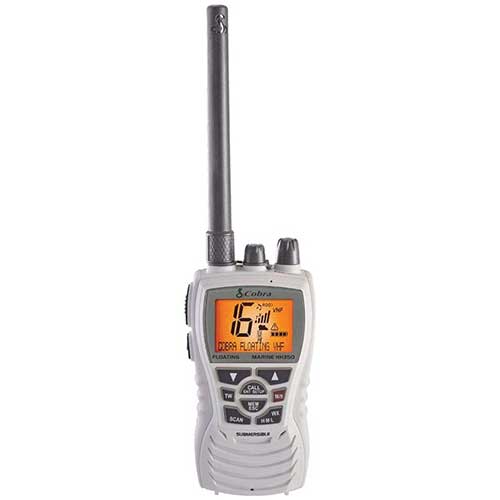
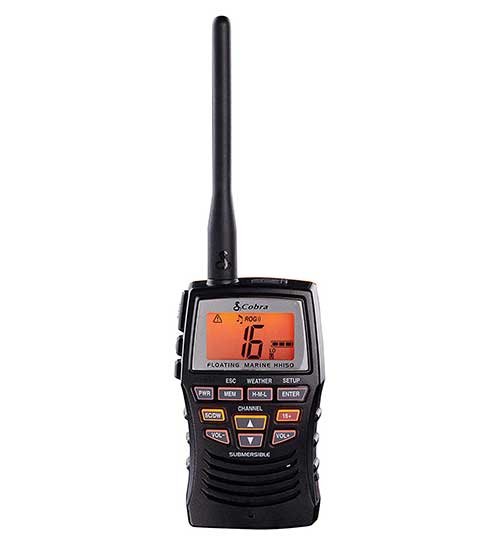
Thanks for the article, the information was useful.